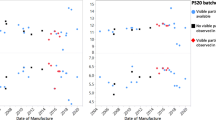Low solubility of drugs is a constantly encountered problem for pharmaceutical science in the field of parenteral dosage form development. This requires the active use of solubilizers to produce soluble forms of substances suitable for administration via injection and infusion. Polysorbates or Tweens are often used as surfactants with the same poly(oxyethylene) part and different fatty acids that form the corresponding esters to overcome the hydrophobic nature of drugs. The introduction of polysorbates into pharmaceutical science and practice still remains relevant due to their high solubilizing activity, compatibility with other surfactants and electrolytes, and insensitivity to pH changes. This review highlights the properties of polysorbates and their use in pharmaceutical development (for drugs used both in clinics and at various stages of research), which makes it possible to assess the prospects for using these excipients to create dosage forms with new hydrophobic active substances.

Similar content being viewed by others
References
A. N. Trefilova, E. R. Akhmarova, E. N. Pozyumko, et al., Vestn. VGU, Ser.: Khim., Biol. Farm., No. 3, 126 – 130 (2017).
I. D. Gulyakin, L. L. Nikolaeva, E. V. Sanarova, et al., Razrab. Regist. Lek. Sredstv, 2(11), 96 – 112 (2015).
E. V. Sanarova, A. V. Lantsova, and N. A. Oborotova, Biofarm. Zh., 6(4), 3 – 13 (2014).
I. D. Gulyakin, L. L. Nikolaeva, N. A. Oborotova, et al., Razrab. Regist. Lek. Sredstv, 2(15), 52 – 59 (2016).
V. L. Bagirova, N. B. Demina, I. A. Devyatkina, et al., Farmateka, 6, 34 – 36 (1998).
R. C. Rowe, P. J. Sheskey, and M. E. Quinn, Handbook of Pharmaceutical Excipients, Pharmaceutical Press and American Pharmacists Association, London (2009), pp. 549 – 553.
H. Knoch, M. H. Ulbrich, J. J. Mittag, et al., Mol. Pharm., 18(8), 3147 – 3157 (2021).
B. A. Kerwin, J. Pharm. Sci., 97(8), 2924 – 2935 (2008).
S. Fekete, K. Ganzlera, and J. Fekete, J. Pharm. Biomed. Anal., 52(5), 672 – 679 (2010).
A. D. Askretkov, P. M. Isaikina, S. A. Cherepushkin, et al., Razrab. Regist. Lek. Sredstv, 3(20), 124 – 129 (2017).
E. V. Blynskaya, S. V. Tishkov, K. V. Alekseev, et al., Farmatsiya, 66(1), 14 – 18 (2017).
E. V. Brovca, J. Mravljak, R. Sink, et al., Int. J. Pharm., 581, 119985, (2020).
M. A. Liebert, Int. J. Toxicol., 3(5), 1 – 82 (1984).
K. Wuchner, L. Yi, C. Chery, et al., J. Pharm. Sci., 111(5), 1280 – 1291 (2022).
M. Agarkhed, C. O’Dell, M. C. Hsieh, et al., AAPS Pharm. Sci. Tech., 14(1), 1 – 9 (2013).
F. Bensaid, C. Dagallier, J. R. Authelin, et al., Int. J. Pharm., 615(5), 121496 (2022).
E. Ha, W. Wang, and Y. J. Wang, J. Pharm. Sci., 91(10), 2252 – 2264 (2002).
M. T. Jones, H. C. Mahler, S. Yadav, et al., Pharm. Res., 35(8), 148 (2018).
W. Kranz, K. Wuchner, E. Corradini, et al., J. Pharm. Sci., 109(10), 3064 – 3077 (2020).
E. T. Maggio, J. Excipients Food Chem., 3(2), 45 – 53 (2012).
V. I. Grokhovskii, A. A. Bendryshev, S. V. Shvets, et al., Razrab. Regist. Lek. Sredstv, 2(19), 160 – 165 (2017).
J. L. Waters, O. E. P. Smith, W. Small, et al., J. Chromatogr. A, 1623, 461212 (2020).
A. Sparreboom, M. Zhao, R. J. Brahmer, et al., J. Chromatogr. B: Anal. Technol. Biomed. Life Sci., 773(2), 183 – 190 (2002).
S. F. Zhang, D. Yan, H. Y. Tang, et al., Zhongyaocai (J. Chin. Med. Mater.), 32(6), 969 – 972 (2009).
W. B. Shelley, N. Talanin, and E. D. Shelley, Lancet, 345(8960), 1312 – 1313 (1995).
G. Cavaletti, E. Cavalletti, P. Montaguti, et al., NeuroToxicology, 18(1), 137 – 145 (1997).
L. B. Michaud, V. Valero, and G. Hortobagyi, Drug Saf., 23(5), 401 – 428 (2000).
Yu. N. Morozov, P. N. Kolotilov, V. P. Shabatin, et al., RU Pat. No. 2,440,120, Jan. 20, 2012.
P. A. Cherepanov, RU Pat. No. 2,255,729, Jul. 10, 2005.
V. P. Shabatin and P. S. Arsen’ev, RU Pat. Appl. No. 2007129916, Feb. 20, 2009.
C.-S. Yong, B.-J. Park, D.-H. Kim, et al, Drug Dev. Ind. Pharm., 33(5), 531 – 534 (2007).
H. Kaur, S. Ghosh, P. Kumar, et al., Life Sci., 2841, 1 – 11 (2021).
R. Xu, J. Wang, J. Xu, et al., Int. J. Nanomed., 15, 1149 – 1160 (2020).
N. A. Wahgiman, N. Salim, M. B. A. Rahman, et al., Int. J. Nanomed., 14, 7323 – 7338 (2019).
Author information
Authors and Affiliations
Corresponding author
Additional information
Translated from Khimiko-Farmatsevticheskii Zhurnal, Vol. 56, No. 7, pp. 35 – 39, July, 2022.
Rights and permissions
Springer Nature or its licensor (e.g. a society or other partner) holds exclusive rights to this article under a publishing agreement with the author(s) or other rightsholder(s); author self-archiving of the accepted manuscript version of this article is solely governed by the terms of such publishing agreement and applicable law.
About this article
Cite this article
Sanarova, E.V., Lantsova, A.V., Nikolaeva, L.L. et al. Using Polysorbates to Create Parenteral Dosage Forms of Hydrophobic Substances (A Review). Pharm Chem J 56, 974–978 (2022). https://doi.org/10.1007/s11094-022-02735-7
Received:
Published:
Issue Date:
DOI: https://doi.org/10.1007/s11094-022-02735-7




